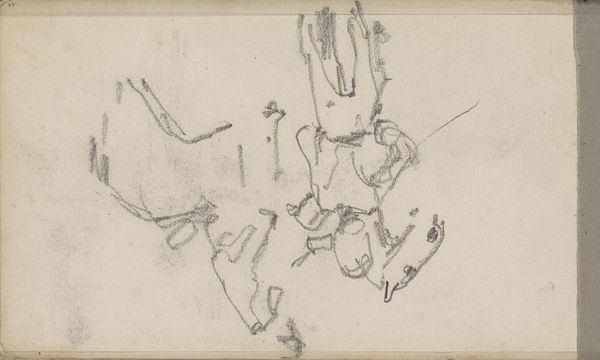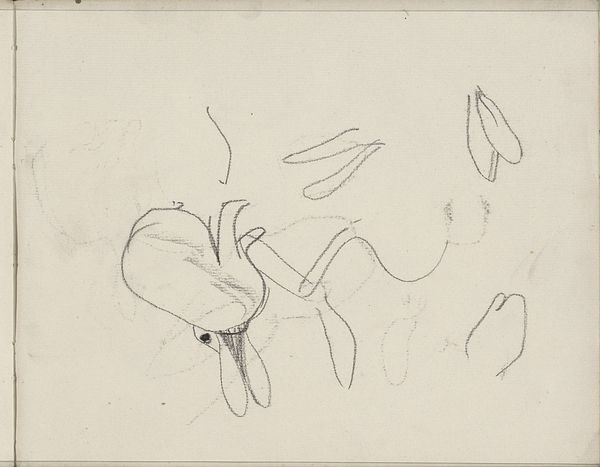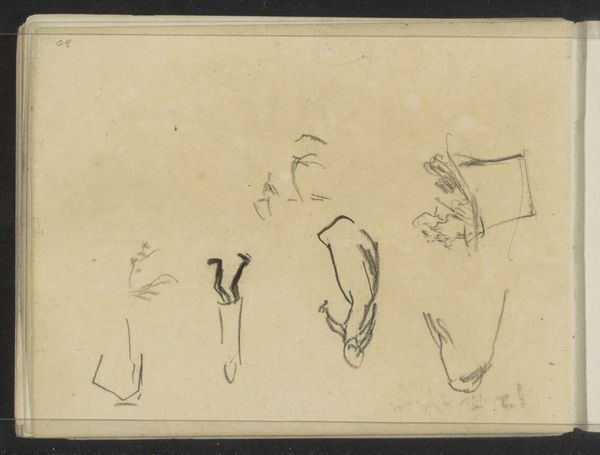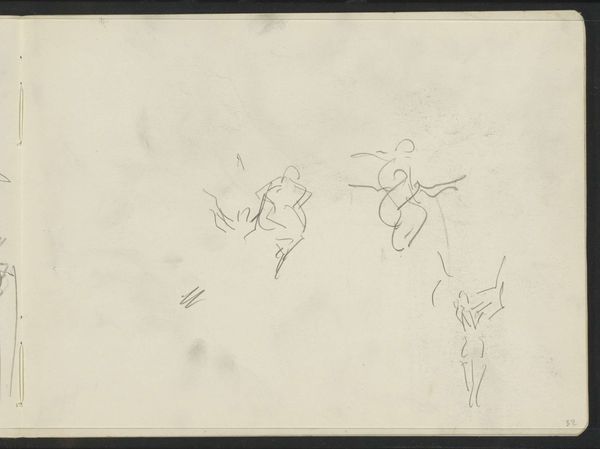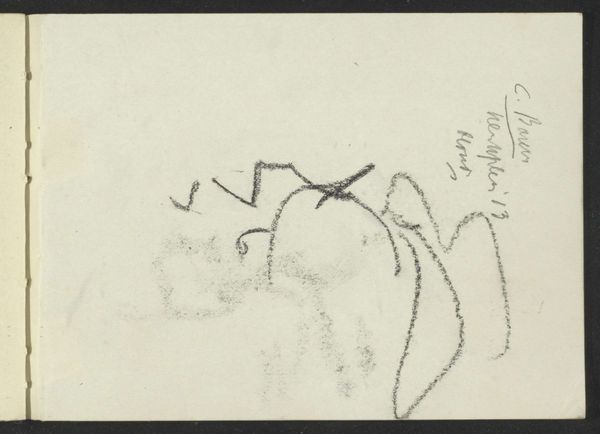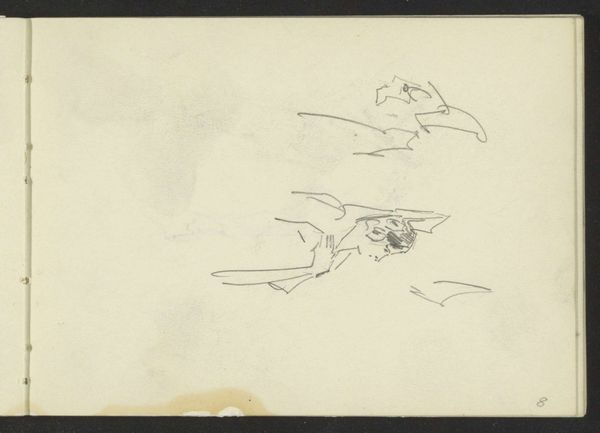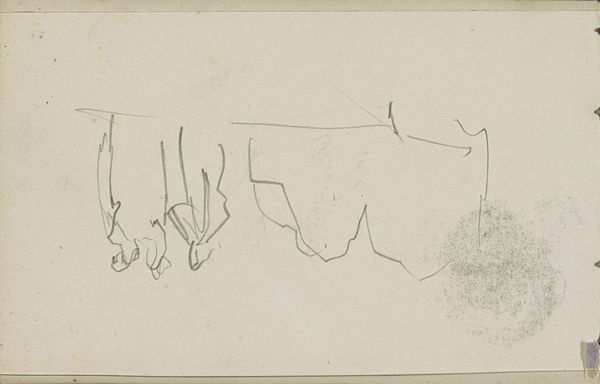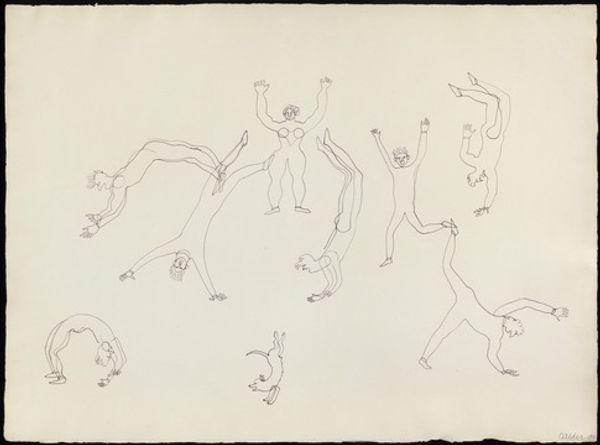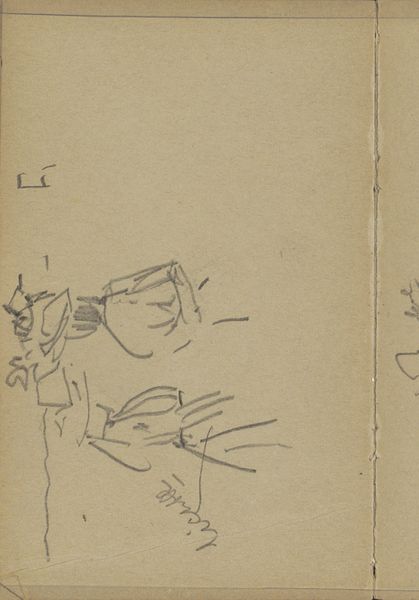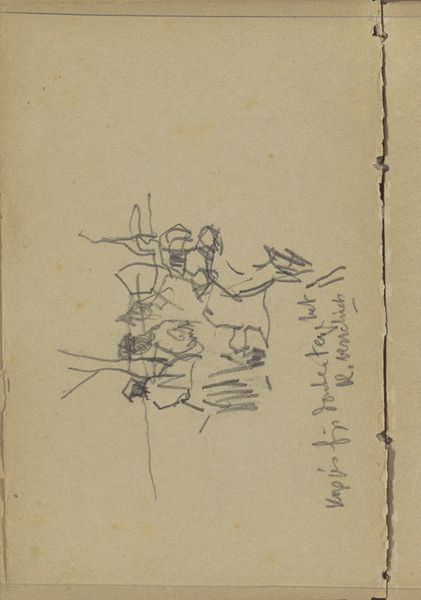
drawing, graphite
#
drawing
#
impressionism
#
figuration
#
child
#
sketch
#
graphite
#
academic-art
Copyright: Rijks Museum: Open Domain
Curator: I’m immediately struck by the sheer brevity and immediacy of these graphite sketches. They’re so raw. Editor: Raw is right. Here we have George Hendrik Breitner’s "Figuurstudies," made between 1880 and 1882. These figure studies now reside at the Rijksmuseum, offering a peek into Breitner’s process. Curator: The swiftness of the line… it captures something fundamental about childhood. There's an honesty that emerges from this incompleteness. Think of how often we perceive childhood, especially in retrospect, through a gauzy lens. This just cuts through that. Editor: Precisely. It is worth noting that sketchbooks such as these were instrumental in the artistic practices of late 19th century academic art. Think about the cost and labor—to produce highly finished pieces could be intensive. Breitner, then, uses sketching as a mode of visualizing subjects from everyday life for later integration into painting projects, if he chose. Curator: Yes! They almost seem like notations, recording postures and fleeting moments. There’s a lovely universality in that awkwardness – and it’s definitely enhanced by its monochrome character. I can think of a parallel between this sketch and images of street urchins in literature – little symbolic anchors reminding us of mortality and ephemerality, and of the artist's conscious turn towards the contemporary rather than the historic or idealized. Editor: I'm curious about your point about universality. What makes you feel this way? After all, this graphite sketch wasn't necessarily destined for display in its current state. It may very well have served as preliminary visual thinking, even a tool. Curator: Perhaps it’s not that the sketches have universal meaning *inherently*, but rather, their seeming transparency invites us to project our own associations and meanings onto them. To fill in those missing details ourselves. Editor: An active participation in looking. I appreciate that observation. Well, next time I’m at the Rijksmuseum, I'll be sure to pause here and think about what Breitner's materials can tell us. Curator: As for me, I'll ponder how these seemingly offhand figures continue to ripple through visual culture, quietly shaping our perception of childhood itself.
Comments
No comments
Be the first to comment and join the conversation on the ultimate creative platform.
